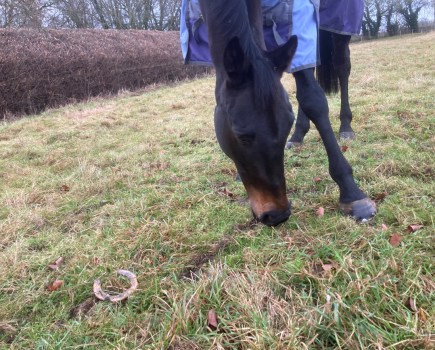In partnership with Allen & Page
How should you take your horse’s workload into account when it comes to feeding? Allen & Page nutritionist Jo Palmer delves into what the different categories of workload are and how they should inform your feeding practises.
As a horse’s feeding requirements increase with workload, not only in terms of the amount of energy they require, but also for nutrients, including protein, vitamins and minerals. It is important to accurately gauge your horse’s workload to avoid under or over feeding.
Light work
Most leisure horses would be classed as being in light work – that is ridden for one to three hours a week in walk and trot with a small amount of canter work.
Medium/ moderate work
To fall into the medium/ moderate work category your horse would need to be ridden at least three to five times a week, for a minimum of an hour each time. Although not necessarily competing, they would be undertaking more canter work and for longer period. Frequent jumping and strenuous hill work would also push them into having more than a light workload.
Heavy work
Only hard working horses who are ridden most days in fast or strenuous work, such as polo ponies, novice and above eventers, higher level showjumpers, advanced dressage horses and horses hunting for full days are likely to be classed as being in heavy work.
The frequency, duration and intensity of exercise required to get these horses to the level of fitness required to perform these activities is above that of most leisure horses and, as such, these horses will require significantly more nutritional support than those in lower levels of work.
The latest research
The National Research Council (NRC) offers more information on what constitutes a horse in light, moderate, heavy or very heavy work. While the very heavy work category is limited to elite eventers, racehorses and endurance horses, a horse in hard work would be undertaking at least four to five hours exercise a week, around 20% of which would be in walk, 50% in trot, 15% in canter and 15% in gallop and/ or jumping. The horse will be sustaining an average heart rate of 110 beats per minute during exercise.
A horse in medium work will be doing at least three to five hours of exercise a week, with roughly 30% in walk, 55% in trot and 15% in canter, gallop or jumping, achieving an average heart rate of 90 beats per minute.
Light work is defined as one to three hours of exercise a week, with 40% being in walk, 50% in trot and 10% in canter, sustaining an average heart rate of 80 beats per minute.
Listen to the beat
While it is difficult for riders to accurately assess their horse’s heart rate during exercise, the NRC recommendations serve as a reminder of the increasing of a horse’s heart rate as a measure of how hard they are working.
To track the duration and intensity of their exercise, try using one of the smartphone apps that assess your riding sessions and tell you how much of every ride is spent in each pace. You might be surprised by the results.
Meet the expert: Jo Palmer has a BSc (Hors) in agriculture with animal science and is a member of the Allen & Page nutrition team, helping to guide owners on feeds and feeding.








